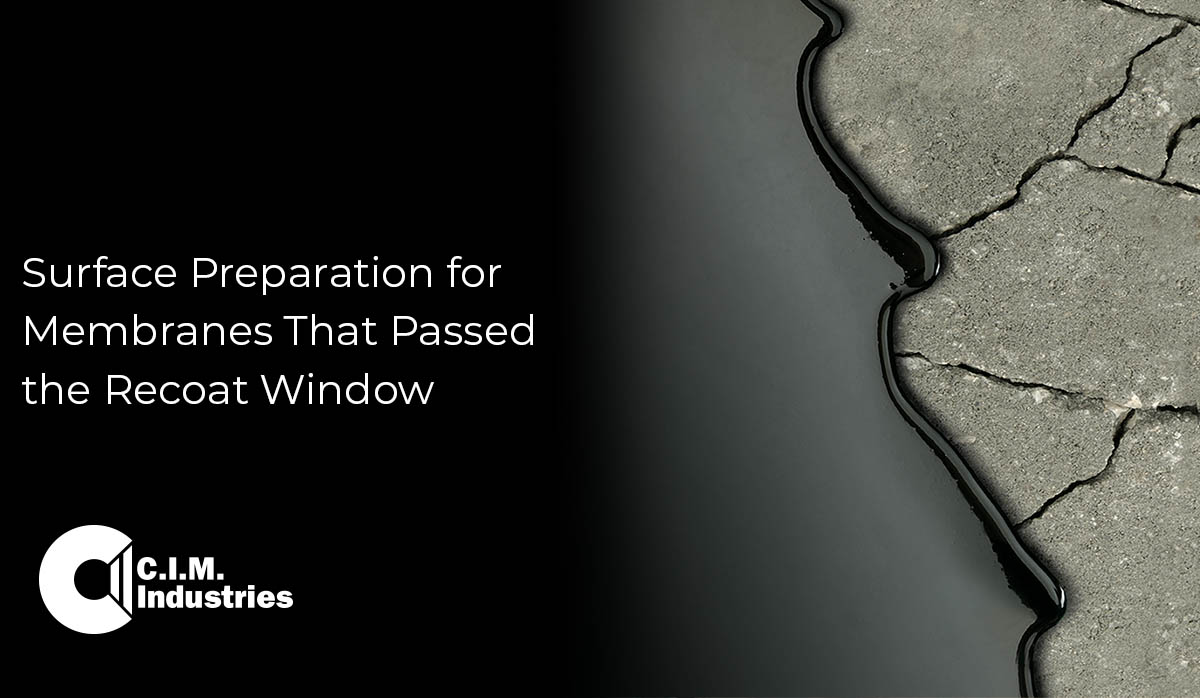It’s said that two heads are better than one. The same principle applies to waterproofing membranes. Typically, you apply a layer of CIM waterproofing, wait for one to four hours, then apply your second layer. This is all after choosing a waterproofing membrane, of course. This is the recoat window for most membranes, and it marks the period of maximum adhesion between layers. That said, there are innumerable reasons why you may miss this recoat period.
It happens, and it isn’t an issue for experienced applicators. With the right tools and technique, you can abrade (rough up) the surface of the membrane to improve its ability to bind well after the surface has set.

.png?width=650&height=278&name=CIM%20Chase%20logoK_301C%20(3).png)






